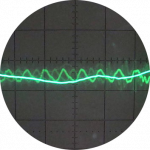Controversial opinions - pure weather compensation, buffer tank, heat loss, oversized heat pumps
@heatgeek I wouldn't normally comment on such a varied emitter scheme. I think I’m just trying to establish a few principles of HP operation in a simple emitter setup and what I see as the important roll of sizing emitters for the widest practical modulation range that the chosen HP can accommodate. And that HP minimum output is part of that assessment.
Inevitably radiator capacity required for flow temps as low as 30c would call in to question the visual impact of larger radiators. But in the main it would appear from your comments that you seem to agree that radiator sizing for lower flow operation is an essential routine. I guess the Design challenge comes into question in deciding what level of cycling is acceptable? An area I don’t know is whether volumizers may also help.
Posted by: @sunandair... and what I see as the important roll of sizing emitters for the widest practical modulation range that the chosen HP can accommodate. And that HP minimum output is part of that assessment.
For the avoidance of doubt I still don't get the first part of this as explained above, and would appreciate clarification if you have the time and inclination.
I definitely agree that HP minimum output is a design consideration however (and can confirm that it was or me!), albeit only to the (limited) extent that it can realistically be factored in given all the other 'hard' constraints. Like you I wouldn't make assumptions about minimum capacity, I would (and did) look at the actual spec. My 'at best 3' above was just for the purpose of calculating a reasonably expectation for the 'no-cycling' temperature window. However thats separate, so far as I can see, from emitter sizing.
4kW peak of solar PV since 2011; EV and a 1930s house which has been partially renovated to improve its efficiency. 7kW Vaillant heat pump.
Posted by: @sunandair@jamespa apologies James I’m on a train so dashing between platforms
er no need to apologise, you aren't obliged to answer quickly or indeed at all!
4kW peak of solar PV since 2011; EV and a 1930s house which has been partially renovated to improve its efficiency. 7kW Vaillant heat pump.
@sunandair I think I understand what you are getting at with “widest range”. This is not an easy dilemma. You are right about radiator over-size at 15C. It’s the space problem I had. I guess that a fudge is the best option and size the radiator midway. This mitigates its size at 15C. At the other end, loss of output due to defrost cycling is an issue. The radiator having an excess output could somewhat compensate for this loss. Openenergymonitor.org state that defrost for a 10kW HP consumes 1.2kWh of energy and can occur every 30 minutes. This is effectively a loss of 2kW output and is not trivial. I agree with your statement about choice of HP re low output. Again, maybe a fudge is needed and reduce HP size to shift output nearer lower bottom-end (less cycling) and provide some other form of heating for the last few degrees at the cold end e.g. wood-burner. Exactly what choice of fudge is a matter of HP religion.
Private individual. No affiliation with commercial "Heat Geeks" of same coincidental name.
Posted by: @jamespaPosted by: @sunandairMy first thoughts are that the process is more dynamic than your model suggests. Your idea that demand is determined by the house isn’t quite how I see it… it is crucially and thankfully determined by the Weather Compensation Curve (incl. the Auto Adapt variants) this means heating commences at the right flow temperature and doesn’t race off into oversupply of heat.
if the Design temperature is say 55c at -3c OAT and that’s what the radiator system is sized for then this limits how low temperature the system can modulate down to, because the radiators offload capability at say 35c become the limiting factor.So in other words designing for the 55c flow temperature is only doing half of the design. The radiators are the tools of the heat pump providing maximum flexibility of lower temperature operation allowing the fullest scope of modulation based on the most efficient output.
The tables I posted above show that the radiators must be bigger to provide a high enough output when operating at 35c and lower. To ignore this is to seriously compromise the operating process.
Ultimately it’s down to the WC Curve to keep the room temperature below the target and it can only achieve this if the appropriate modulated temperature is attained and preferably without undue cycling. But this all assumes the heat pump is sized correctly but that is an entirely different set of design issues.
Ultimately demand is defined by the house because ultimately the heat pump (plus any sundry sources of heating) must supply exactly the amount of energy as that lost by the house to the outside world, if the house is to stay at the same temperature. Of course there can be short term deviations from equilibrium, but long term I think this equivalence is a given based on conservation of energy.
It is true that, if I set my flow temperature, through the WC curve, at a level higher than that required to ensure that this amount of energy is lost from the radiators to the house, then two things will happen
1. The house will heat to above the design temperature
2. The house loss will increase because the IAT-OAT difference has increased
As a result the heat pump will indeed cycle less, or more precisely will cycle with a larger duty cycle (the frequency may remain the same depending on what determines the duty cycle).
Obviously if one is happy to tolerate the two effects above one can reduce cycling, but Im not sure why one would do that.
That said we can 'layer on' some diurnal variation to this 'steady state' argument. Its generally warmer at day than at night, so for much of the season cycling is more likely to happen during the day than during the night. If you overheat during the day, reducing cycling, the heat pump will have to supply less energy at night, when its anyway less likely to cycle. Overall therefore one might get less cycling. This is a sort of 'reverse setback' with the aim of reducing cycling and I think would work. Whether it makes sense is however a moot point.
In summary I don't think you are correct, unless you are prepared to allow the house to rise above the design temperature (and hence losses to increase) for the sole purpose of reducing cycling. Perhaps if you step through a specific example (with numbers) of how and why the radiators need to be designed not just for low OAT but also for high OAT it might become clearer where the respective arguments differ. I don't understand this either (and the paper spreadsheet you posted didn't enlighten me) and the two are obviously linked, so stepping through an example might well help.
james you appear to be sighting an example which I have never said.
I have never asserted this statement so I don’t see why you are saying it. Above you stated
“It is true that, if I set my flow temperature, through the WC curve, at a level higher than that required to ensure that this amount of energy is lost from the radiators to the house, then two things will happen”
My actual comments are the opposite of this statement.
The solution I have described is to increase the designed radiator capacity ie the size of the radiators and not the flow temperature which your statement above implies. This size calculation is based on low flow operation and the minimum output requirements of the Heat Pump for continuous operation.
If the weather curve is set correctly then the house envelope will never reach the set temperature and therefore never shut down.
The radiator capacity at low flow temperatures are the tools of the heat pump giving it the free unhindered access to low modulated operation. If the radiator capacity is too small then the fewer radiators have to run hotter which is less efficient………..and causes more cycling……
Posted by: @sunandairjames you appear to be sighting an example which I have never said.
Apologies, I was trying to work out what you were saying and misunderstood.
Posted by: @sunandairThe solution I have described is to increase the designed radiator capacity ie the size of the radiators and not the flow temperature which your statement above implies. This size calculation is based on low flow operation and the minimum output requirements of the Heat Pump for continuous operation.
...
The radiator capacity at low flow temperatures are the tools of the heat pump giving it the free unhindered access to low modulated operation. If the radiator capacity is too small then the fewer radiators have to run hotter which is less efficient………..and causes more cycling……
If I increase the radiator capacity then it follows that the flow temperature must be lower for any given radiator output. This will of course improve COP but also normally either doesn't change, or marginally increases, the minimum output of the heat pump (as you can see in the two curves for the same model pump which you posted upthread)
Im sorry but I am still not understanding how this helps with cycling. The output required from the radiators remains fixed by the house, and unless you can do something which changes the minimum output of the pump (such as reducing radiator size and increasing flow temperature - but at the expense of COP) you are snookered.
Posted by: @sunandairIf the weather curve is set correctly then the house envelope will never reach the set temperature and therefore never shut down.
Sorry I dont understand that either. If the heat pump is outputting more than the radiators can emit, the heat pump will eventually shut down irrespective of what the house does, because the flow temperature exceeds the target flow temperature + permitted overshoot. Thats a function of the basic FT control loop.
Posted by: @sunandairThe solution I have described is to increase the designed radiator capacity
I would be grateful if you could talk through an example of how this helps.
Let us suppose I have initially picked a radiator which is correctly sized to match the house demand at OAT -2 and 45C flow temperature. Obviously at higher OATs I will be running at a lower flow temperature to match the output of the radiator to the lower demand.
Now suppose I increase radiator size from this starting point, what happens to flow temperature (to maintain the same output, which I presume is the intention) and why does that reduce cycling?
4kW peak of solar PV since 2011; EV and a 1930s house which has been partially renovated to improve its efficiency. 7kW Vaillant heat pump.
i) This is an all radiator system.
ii) All radiators are the same n coefficient and over-sized for 15C OAT.
iii) The HP has a non-linear WC curve which exactly matches the coefficient of the radiator.
iv) The HP minimum output matches the load at 15C OAT and scales up on WC to your design output, keeping house temperature just below the target all the time.
Private individual. No affiliation with commercial "Heat Geeks" of same coincidental name.
Posted by: @heatgeekIn the above scenario, with correct over-sized radiators at 15C and HP minimum output chosen for 15C (e.g. 6kW instead of a 10kW to get to 2.5kW minimum at 15C), the HP will run out of puff at the top-end and a second heat source will be needed to reach -3C OAT.
I agree.
Posted by: @heatgeekIn this instance, if the HP is 6kW and the load 4kW, cycling will occur. Whether the radiators are smaller with higher flow temperature (less efficiency for sure), or bigger with lower flow temperature, the cycling should be the same. It is the proportion of heat power output that matters, I believe, which is constant in this case.
I agree.
Given the range of our climate and the maximum modulation range available from current heat pumps, I concede that we can (in theory) avoid cycling at the high OAT end but at the expense of not being able to cope with the low OAT end. Up until now I have taken that coping with the low OAT end is a design requirement, but accept that, if we dispense with this constraint, the high OAT end can be sorted.
Two heat pumps would of course solve the problem, but at the expense of an additional pump. I think there may be a pump out there with two compressors of different size which of course a variant. I have no idea whether the 'problem' of cycling is sufficiently serious to merit this extra complexity and expense.
4kW peak of solar PV since 2011; EV and a 1930s house which has been partially renovated to improve its efficiency. 7kW Vaillant heat pump.
Posted by: @jamespaI have no idea whether the 'problem' of cycling is sufficiently serious...
Neither do I. There are countless examples across many disciplines of received wisdom turning out to be received nonsense.
Putting aside defrost cycling, which is definitely detrimental to performance, but currently necessary, as for some reason unknown to the wit of man no one has come up with another solution to the icing up problem, is low frequency cycling (by arbitrary definition less than six cycles an hour), really such a calamity? Furthermore, isn't some form of cycling inevitable if you have (a) a device with a limited modulation range and a (b) a demand that goes from zero to X, where zero to X is greater than the modulation range of the device?
Perhaps we need to define why low frequency cycling is a problem, if indeed it is, and if it is, what the costs/harms are.
Midea 14kW (for now...) ASHP heating both building and DHW
Isn't the size of emitters issue diminished if UFH is favoured rather than radiators.
And wouldn't UFH be cheaper than adding a second heat-pump?
In any case, a house design which requires two heat-pumps, or a heat pump with two compressors, would then fall outside the MCS 'approved' list.
So the BUS grant wouldn't apply.
Has @sunandair possibly hinted at the remedy in his post at the top of this page...?
Posted by: @sunandair... and what I see as the important roll of sizing emitters for the widest practical modulation range
That's it!
Emitters on a roll.
Now why didn't I think of that? 😜
Apologies. It's a Friday...
... and I need to get on with installing my UFH.
Save energy... recycle electrons!
Posted by: @transparentIsn't the size of emitters issue diminished if UFH is favoured rather than radiators.
And wouldn't UFH be cheaper than adding a second heat-pump?
Yes but that doesnt solve the problem that @sunandair is saying can be solved by clever emitter design, namely cycling
Posted by: @transparentIn any case, a house design which requires two heat-pumps, or a heat pump with two compressors, would then fall outside the MCS 'approved' list.
So the BUS grant wouldn't apply.
Im cant see why two compressors in the same heat pump falls foul of the rules. Im not actually sure two heat pumps do either (but would need to check the precise wording so it may); however this does fall foul of the rules for permitted development
4kW peak of solar PV since 2011; EV and a 1930s house which has been partially renovated to improve its efficiency. 7kW Vaillant heat pump.
- 26 Forums
- 2,356 Topics
- 53.4 K Posts
- 183 Online
- 6,017 Members
Join Us!
Worth Watching
Latest Posts
-
RE: Octopus Cosy Heat Pump Owners & Discussion Thread
@andrewj Seeing they deleted both threads with the pict...
By HarrisonC , 10 hours ago
-
RE: Who's your electricity provider and what's your tariff?
@mars I think your commentary is very fair and balanc...
By JamesPa , 11 hours ago
-

RE: External pipework insulation
That's great advice @transparent... thank you. @david...
By Mars , 12 hours ago
-
RE: Advice on internal circulation pump noise
Thanks @mikefl - I'll maybe have a look at the lock-shi...
By jtg , 13 hours ago
-

RE: Heat Pump Heats the House… But It’s Not Cosy. Emitter Changes or System Tweak?
@toodles interesting suggestion, thanks. I will try to...
By GrahamF , 13 hours ago
-
RE: Mitsubishi Ecodan Auto Adaption trial to stop cycling.
The interval you talk of, i think, will be 60min for an...
By F1p , 17 hours ago
-

RE: Electricity price predictions
Does anyone have a current graphic, visual or breakdown...
By Mars , 20 hours ago
-
Agree with @majordennisbloodnok on the setbacks. We hav...
By ChandyKris , 1 day ago
-
RE: New Fogstar 15.5kWh upright solution
It is a matter of luck. 2ith Fogstar "instructions", to...
By Batpred , 1 day ago
-

RE: Speedcomfort radiator fans
@deltona the way the links were added broke the page. A...
By Mars , 2 days ago
-

RE: Setback savings - fact or fiction?
I agree! Even more so if we get an answer! But the chal...
By cathodeRay , 2 days ago
-

RE: Refrigerant R32, is it now banned in the EU from 1st Jan 2027 for monobloc ASHPs?
This has been delayed from what I believe to be this ye...
By dgclimatecontrol , 2 days ago
-
RE: Are We Sleepwalking Into Another Race to the Bottom?
this is why I provided current flow temperatures in the...
By ksim , 2 days ago
-

RE: Why Millions of UK Homes Struggle With Heat Pumps
There's many homes that would be quite a disruption for...
By dgclimatecontrol , 2 days ago
-
RE: Ecodan unable to hit legionella target temp - what's the consensus?
@rhh2348 ...maybe this option is what you want? Alter...
By benson , 2 days ago
-

RE: Free Ecoheat Heat Pump Install
@old_scientist This does make the unit smaller as the b...
By dgclimatecontrol , 2 days ago
-
RE: Ecodan - Legionella Operation Time and Target Temperature
@old_scientist hiya mate, did you ever get to the botto...
By 9jwr9 , 2 days ago
-
RE: Configuring third party dongle for Ecodan local control
@majordennisbloodnok I think the HPDHD diagnosis may be...
By Sheriff Fatman , 3 days ago




